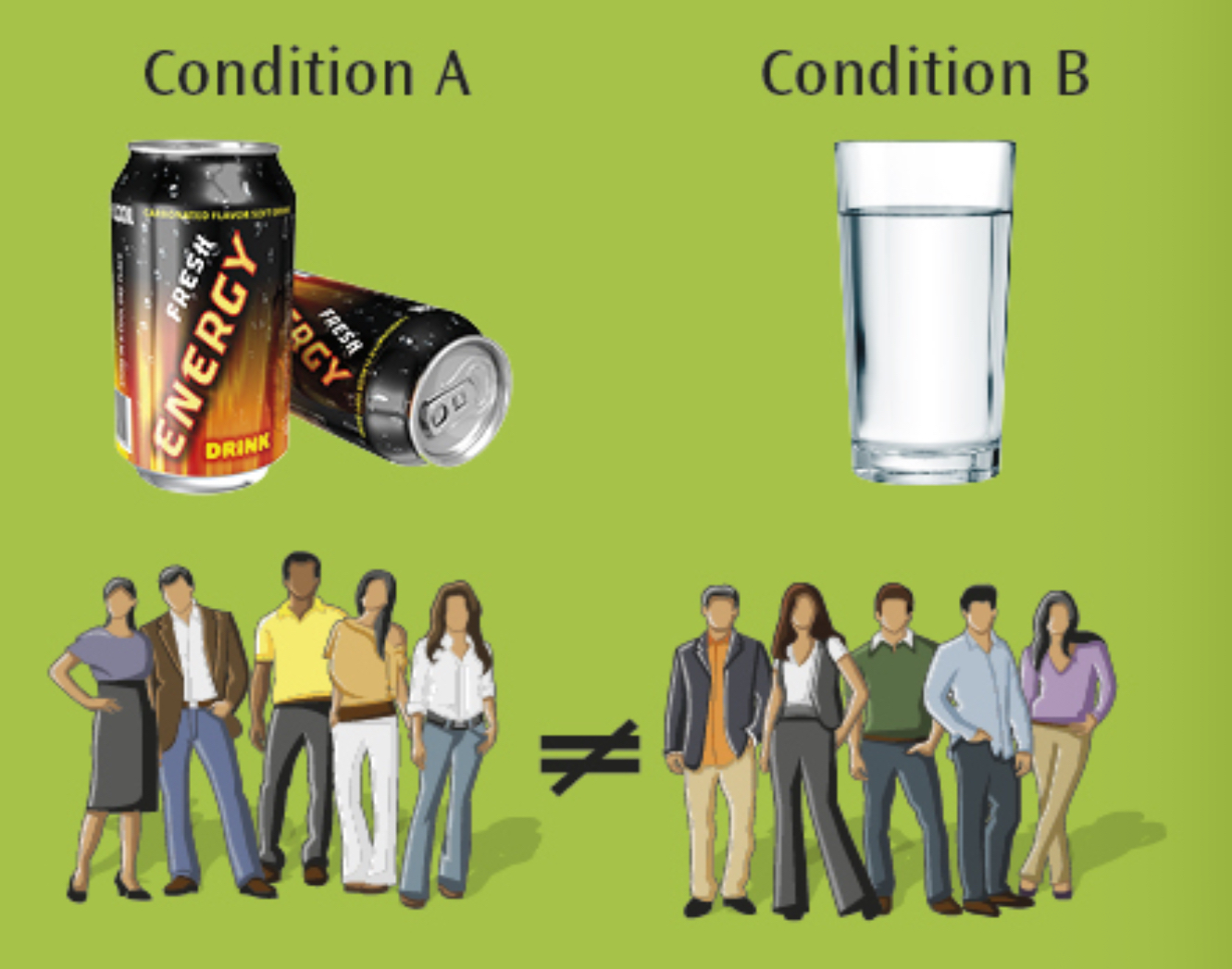Experimental designs
1/13
Earn XP
Description and Tags
Name | Mastery | Learn | Test | Matching | Spaced |
|---|
No study sessions yet.
14 Terms
What are the different types of experimental designs?
Independent groups
Repeated measures
Matched pairs
What is independent groups?
Two separate groups experience two different conditions (all participants experience one level of IV), their performances then compared

How are participants placed in each condition?
Randomly allocated to avoid researcher bias
What kind of data does independent groups produce?
Unrelated data: the data in one condition cannot be paired with the data of the other condition
What is repeated measures?
All participants experience both conditions, the two mean scores from both conditions compared

How do repeated measures counteract order effects?
Counterbalancing: half the participants take part in condition A → B, half B → A
What is matched pairs?
Participants are paired together based on a similar variable relevant to the experiment
What is the purpose of matched pairs?
To control confounding variables
What are the limitations of independent groups?
If more participants with a particular characteristic are randomly assigned to one of the groups, this can influence the measurement of the DV → this would be a confounding variable
Less economical than repeated measures as each participant contributes a single result only → repeated measures would produce double this
Less time efficient
What are the strengths of independent groups?
Order effects are not a problem like they are for repeated measures
Participants are less likely to guess the aims
What are the limitations of repeated measures?
Though counterbalancing attempts to fix the issue, order effects can occur because of fatigue or boredom.
Order effects may improve performance due to practice, or deteriorate due to boredom or fatigue.
More likely for participants to work out the aim of the study as they experience all conditions.
What are the strengths of repeated measures?
Participant variables are controlled → higher validity
More time efficient
More economical - fewer participants are needed
What are the limitations of matched pairs?
Time-consuming
Expensive - pre-testing - less economical
Participants can never be matched exactly - small participant variables
What are the strengths of matched pairs?
Order effects and demand characteristics are not problems as participants only take part in a single condition